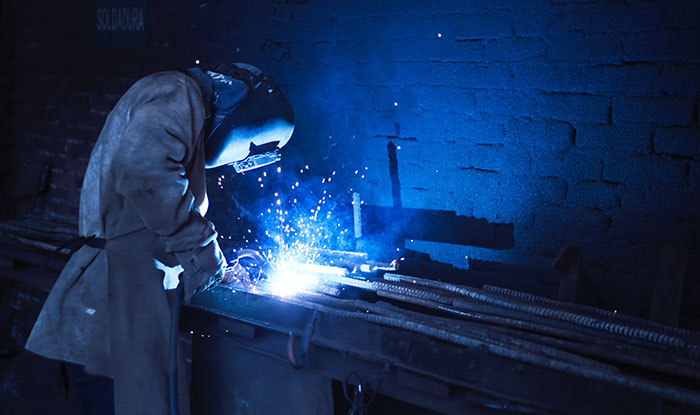Basic Machine Shop Safety Rules
Without the proper equipment and training, a machine shop can be one of the most dangerous places to work. Fast-moving parts, sharp edges and sparks are just a few of the inherent dangers of a machine shop. However, with proper training, and by following government issued guidelines, machine shops crews can stay safe and injury free. Occupational Safety and Health Administration (OSHA) guidelines cover multiple facets of machine shop safety, including walking surfaces, hazardous materials, personal protective equipment, means of egress and sanitation, among others.
From An Employee's Perspective
Safety should be the No.1 priority of machine shop employees for obvious reasons. By keeping safety in mind at all times, workers ensure that they keep all of their fingers, toes, eyes and other vital parts. Other concerns include time away from work and insurance costs. Shop crews should be vigilant about spotting safety concerns and having an open communication with the shop managers.
From An Employer's Perspective
While employers certainly want to keep their employees safe and happy, they should also be concerned with the costs of injuries. For example, every year in the US, employers pay about $8.6 billion in workers compensation for slip-and-fall accidents alone, according to the National Safety Council. Accidents not only affect the bottom-line, they can completely annihilate it.
Creating A Safe Shop
The actual environment of the shop plays an important role in employee safety. From the floor to the ceiling, everything should be managed to get the maximum potential for safety. For example, lighting fixtures may not seem like they play an obvious role in workplace safety, but they could make a vital difference. A worker should never attempt to operate a machine in a poorly lit environment – any number of hazards may not be apparent in low lighting. As G.I Joe always says, "knowing is half the battle" – and that goes especially for workplace safety.
In addition to the lights, all electrical systems should be checked and maintained regularly. You don't want to add the risk of electric shock to the already long list of machine shop hazards. That goes for all systems – especially those with moving parts. Years of wear and tear could cause some parts of the machines to become unstable. This is a primary cause of unexpected surprises and accidents.
Signage is another way to improve the working environment. OSHA offers signs displaying machine shop safety guidelines, but employers can get others that remind workers of the safety rules. Such displays can remind workers to wear their safety equipment, such as gloves or steel-toed boots. This measure is especially useful for newer workers who haven't had time yet to make safety a habit.
Building Safe Habits
Some safety habits come with time, some are learned the hard way and others are reinforced via structured means, such as machine shop safety training sessions. Building safety habits is an integral part of reducing workplace accidents. After all, the guidelines only work if people follow them. The machine shop safety program you follow can be simple, such as remembering to put on safety shoes, hard hats or protective eyewear.. In more complex cases, the habit might be the proper cleaning of a machine. The key to keeping a machine shop safe is to keep lines of communication open. Managers and employees not only need to be aware of government machine shop safety rules and regulations, as well as common-sense practices, they should also be in a dialogue about how best to implement them. Doing so will keep productivity up and accidents to a minimum.
Employees and Your Bottom line.
Don't Forget To Share This Post!

Top 10 Loading Dock Safety Tips
Loading dock areas are notorious for their numerous safety hazards. Sidestep risk to your workers by following these 10 loading dock safety tips.

Keep Safe While Working In a Metal Shop
Being aware of the common injuries associated with working in a metal or machine shop is critical. Here are the most common hazards and safety tips.

Think About Safety In The Wood Shop
Whether you're a manager, craftsman or new employee, here are 4 important and unexpected hazards to safety in the wood shop, regardless of size.